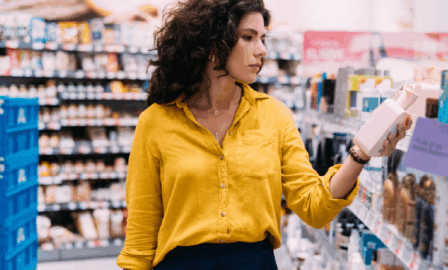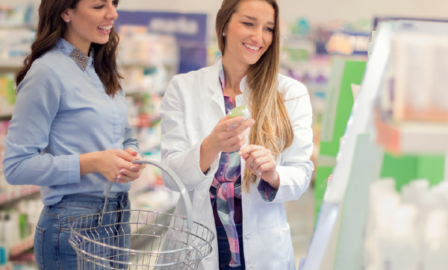Meeting the Clean Beauty Movement
Within the last decade, several industries have seen an uptick in global consumer awareness around clean beauty and organic products. Specifically, within the cosmetics industry, 70% of US consumers say they prefer natural and organic products. The US organic personal care market has shown its strongest growth in the last five years and is expected to grow beyond $7.74 billion by the year 2025. Why is this industry growing? So many of today’s consumers are demanding greater transparency into the products they purchase, specifically into the ingredients and their sources. This market has historically been dominated by niche companies and startups whose entire brands revolve around being “organic”, “clean”, or “natural”. However, large cap consumer goods companies have noticed the trend and have been making moves to enter this space as well. Incumbents in the personal care products space including Unilever, Colgate-Palmolive Co., and Proctor & Gamble, Co, have positioned themselves to compete by acquiring smaller companies and building out natural divisions in those companies.
Defining Clean Beauty
Though consumers typically understand the general idea of the terms organic, natural, and clean, how does the industry define these labels? These claims are typically not policed or regulated by any federal organization but there are some common definitions widely accepted by the industry. Clean beauty products, often referred to as non-toxic, are products that are made without ingredients linked to harmful health effects. Natural products are those which do not contain any synthetic materials. The term organic has a more regulated and tiered definition than the similar claims and can only carry the organic label if the product consists of agriculturally produced ingredients to different thresholds. 100% organic products must contain (excluding water and salt) only organically produced ingredients whereas “organic products” must contain at least 95% organically produced ingredients excluding water and salt.
To use the USDA Organic Seal, 95% or more of the ingredients of the product must satisfy the federal organic standards. The last tier of this definition is simply “made with organic ingredients” for which the threshold for the product is at least 70% percent of the ingredients must be organic. For this last definition, product labels can list up to three of the organic ingredients or “food” groups on the principal display panel when labeling products as “made with organic ingredients”.
The last commonly used and least defined term in this market space is green which is often associated with plant-derived, vegan, cruelty-free, eco-friendly, and sustainably-sourced ingredients. All these claims, except for the products that use the USDA Organic Seal, can be used by manufacturers without any formal regulation or validation process. Consumers have developed more informal methods of keeping manufacturers more honest in their use of these claims through complaints, boycotts, and even lawsuits from organizations like the Organic Consumers Association (OCA).
Meeting the Standards for Clean Beauty
If consumers are unable to depend on federal regulations to validate these claims, how can companies proactively substantiate these claims to cultivate consumer trust? Though it requires a little more effort, personal care brands have begun to disclose the full ingredient list by using transparent labeling. This provides greater visibility on the label for components that traditionally have had none like “fragrance” or “parfum” and adds legitimacy to their claims that consumers can verify for themselves. Proctor & Gamble and L’Oréal have begun to reveal the ingredients that constitute the fragrances used in their products to foster this trust with consumers. Leading personal care brands have also begun to allow consumers to look behind the curtain at how their ingredients are sourced, as well as how these brands are helping positively contribute to the environment with sustainable processes.
Consumers, when provided insight to the sourcing of products, feel more comfortable and protected with the clean and natural claims used by brands, as well as the ethical and environmentally responsible sourcing of these ingredients. Both methods require some effort on the consumer to either research the ingredients or learn about the sourcing method which many consumers may not have the time to do. So even though there are no federally regulated standards for organic and clean products, personal care brands are looking to validate their claims with other third-party accreditations or organizations. One such organization is Quality Assurance International (QAI) who operates under the NSF/ANSI 305 American National Standard for regulating organic requirements within the Personal Care Industry. This standard for personal care products was created jointly between the National Science Foundation (NSF) and the American National Standards Institute (ANSI) to define the labeling and marketing requirements for personal care products that include organic ingredients.
Communicating Clean Beauty to Consumers
Though a great way to take the onus off the consumer and validate these clean and organic claims, these consumers might not even know the origin of these third-party accreditations or standards and may not trust them for that reason alone. Another great way for brands to develop trust with consumers is to utilize social media. The target demographic for most of these personal care brands that are wanting to gain market share skews younger than most other industries, with 70% of U.S. consumers aged 18 to 29 preferring natural and organic skincare products.
One of the most effective ways to reach this target demographic is through social media. By posting on various social media platforms, brands will be able to expose their target demographic to the different ways that their products are clean, natural, and organic. This can be through posting the ingredient lists or explaining their sustainable and ethical sourcing methods, and touting their third-party accreditation. Then, these consumers will be passively exposed to this information without having to actively research it themselves by either seeing the information on their social media or by seeing reviews or recommendations by community members or influencers that have tried or partnered with those brands.
Whether you are looking to seek a position of continued brand growth, a position to be acquired, or a defensive position among a sea of digitally native brands, Clarkston can chart a course appropriate for your organization. Our Sales & Marketing services provides new product commercialization, pricing strategy, data analytics and insight as well as holistic marketing alignment. Our Strategy & Innovation experts can help determine what your brand’s next move should be within the clean product industry. Our Quality & Regulatory services can take the guesswork out of areas of compliance like claims substantiation and efficient product recalls. Our Diversity, Equity, and Inclusion experts can ensure that each of your target customers are represented and accounted for in product development, marketing, and research. Our teams are passionate about bringing to life solutions that make brands successful—we are looking forward to discussing next steps for your organization.



